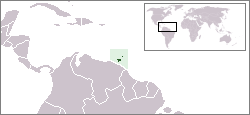|
Ascaptesyle Submarginata
''Ascaptesyle submarginata'' is a moth of the subfamily Arctiinae. It was described by William Schaus in 1905. It is found in Trinidad. No subspecies are listed in the Catalogue of Life The Catalogue of Life is an online database that provides an index of known species of animals, plants, fungi, and microorganisms. It was created in 2001 as a partnership between the global Species 2000 and the American Integrated Taxonomic I .... References Moths described in 1905 Lithosiini Moths of the Caribbean {{Lithosiini-stub ... [...More Info...] [...Related Items...] OR: [Wikipedia] [Google] [Baidu] |
William Schaus
William Schaus (January 11, 1858 in New York City – June 20, 1942) was an American entomologist who became known for his major contribution to the knowledge and description of new species of the Neotropical Lepidoptera. Life William Schaus, Jr. was son of Wilhelm, later William Schaus, Sr. (1820–1892), a German-immigrant art collector and dealer, proprietor of the Schaus Galleries in New York City, and of Margaret Connover. He was educated initially at Exeter Academy and then in France and Germany, and was influenced early in his career by Henry Edwards, although he also studied languages, art and music. Schaus received the honorary degree of Master of Arts from the University of Wisconsin in 1921, and in 1925 that of honorary Doctor of Science from the University of Pittsburgh. He decided, despite parental opposition, and at the sacrifice of a promising career as successor in his father's business, to devote his life to the study of Lepidoptera. Beginning in 1881, he trave ... [...More Info...] [...Related Items...] OR: [Wikipedia] [Google] [Baidu] |
Moth
Moths are a paraphyletic group of insects that includes all members of the order Lepidoptera that are not butterflies, with moths making up the vast majority of the order. There are thought to be approximately 160,000 species of moth, many of which have yet to be described. Most species of moth are nocturnal, but there are also crepuscular and diurnal species. Differences between butterflies and moths While the butterflies form a monophyletic group, the moths, comprising the rest of the Lepidoptera, do not. Many attempts have been made to group the superfamilies of the Lepidoptera into natural groups, most of which fail because one of the two groups is not monophyletic: Microlepidoptera and Macrolepidoptera, Heterocera and Rhopalocera, Jugatae and Frenatae, Monotrysia and Ditrysia.Scoble, MJ 1995. The Lepidoptera: Form, function and diversity. Oxford, UK: Oxford University Press; 404 p. Although the rules for distinguishing moths from butterflies are not well est ... [...More Info...] [...Related Items...] OR: [Wikipedia] [Google] [Baidu] |
Arctiinae (moth)
The Arctiinae (formerly called the family Arctiidae) are a large and diverse subfamily of moths with around 11,000 species found all over the world, including 6,000 neotropical species.Scoble, MJ. (1995). ''The Lepidoptera: Form, Function and Diversity''. Second ed. Oxford University Press. This subfamily includes the groups commonly known as tiger moths (or tigers), which usually have bright colours, footmen, which are usually much drabber, lichen moths, and wasp moths. Many species have "hairy" caterpillars that are popularly known as woolly bears or woolly worms. The scientific name Arctiinae refers to this hairiness (Gk. αρκτος = a bear). Some species within the Arctiinae have the word "tussock"' in their common names because they have been misidentified as members of the Lymantriinae subfamily based on the characteristics of the larvae. Taxonomy The subfamily was previously classified as the family Arctiidae of the superfamily Noctuoidea and is a monophyletic group. ... [...More Info...] [...Related Items...] OR: [Wikipedia] [Google] [Baidu] |
Trinidad
Trinidad is the larger and more populous of the two major islands of Trinidad and Tobago. The island lies off the northeastern coast of Venezuela and sits on the continental shelf of South America. It is often referred to as the southernmost island in the West Indies. With an area of , it is also the fifth largest in the West Indies. Name The original name for the island in the Arawaks' language was which meant "Land of the Hummingbird". Christopher Columbus renamed it ('The Island of the Trinity'), fulfilling a vow he had made before setting out on his third voyage. This has since been shortened to ''Trinidad''. History Caribs and Arawaks lived in Trinidad long before Christopher Columbus encountered the islands on his third voyage on 31 July 1498. The island remained Spanish until 1797, but it was largely settled by French colonists from the French Caribbean, especially Martinique.Besson, Gerard (2000-08-27). "Land of Beginnings – A historical digest", ''Newsday Ne ... [...More Info...] [...Related Items...] OR: [Wikipedia] [Google] [Baidu] |
Catalogue Of Life
The Catalogue of Life is an online database that provides an index of known species of animals, plants, fungi, and microorganisms. It was created in 2001 as a partnership between the global Species 2000 and the American Integrated Taxonomic Information System. The Catalogue is used by research scientists, citizen scientists, educators, and policy makers. The Catalogue is also used by the Biodiversity Heritage Library, the Barcode of Life Data System, Encyclopedia of Life, and the Global Biodiversity Information Facility. The Catalogue currently compiles data fro165 peer-reviewed taxonomic databasesthat are maintained by specialist institutions around the world. , the COL Checklist lists 2,067,951 of the world's 2.2m extant species known to taxonomists on the planet at present time. Structure The Catalogue of Life employs a simple data structure to provide information on synonymy, grouping within a taxonomic hierarchy, common names, distribution and ecological environment. I ... [...More Info...] [...Related Items...] OR: [Wikipedia] [Google] [Baidu] |
Moths Described In 1905
Moths are a paraphyletic group of insects that includes all members of the order Lepidoptera that are not butterflies, with moths making up the vast majority of the order. There are thought to be approximately 160,000 species of moth, many of which have yet to be described. Most species of moth are nocturnal, but there are also crepuscular and diurnal species. Differences between butterflies and moths While the butterflies form a monophyletic group, the moths, comprising the rest of the Lepidoptera, do not. Many attempts have been made to group the superfamilies of the Lepidoptera into natural groups, most of which fail because one of the two groups is not monophyletic: Microlepidoptera and Macrolepidoptera, Heterocera and Rhopalocera, Jugatae and Frenatae, Monotrysia and Ditrysia.Scoble, MJ 1995. The Lepidoptera: Form, function and diversity. Oxford, UK: Oxford University Press; 404 p. Although the rules for distinguishing moths from butterflies are not well establish ... [...More Info...] [...Related Items...] OR: [Wikipedia] [Google] [Baidu] |
Lithosiini
The Lithosiini are a tribe of lichen moths in the family Erebidae. The taxon was described by Gustaf Johan Billberg in 1820. Systematics The tribe was previously treated as a higher-level taxon, the subfamily Lithosiinae, within the lichen and tiger moth family, Arctiidae. The ranks of the family and its subdivisions were lowered in a recent reclassification while keeping the contents of the family and its subdivisions largely unchanged. These changes in rank triggered changes in the suffixes in the names. The family Arctiidae as a whole was reclassified as the subfamily Arctiinae within the family Erebidae. The original subfamily Lithosiinae was lowered to tribe status as Lithosiini, and its original tribes were lowered to subtribe status by changing the -ini suffix to -ina (e.g., Acsalini became Acsalina). Thus the present name "Lithosiini" used to refer to only a subgroup of the entire lichen moth group (Lithosiinae), but now it refers to the entire group. The systema ... [...More Info...] [...Related Items...] OR: [Wikipedia] [Google] [Baidu] |




